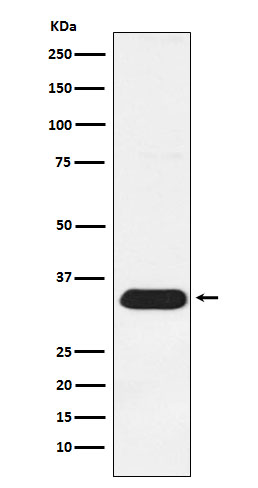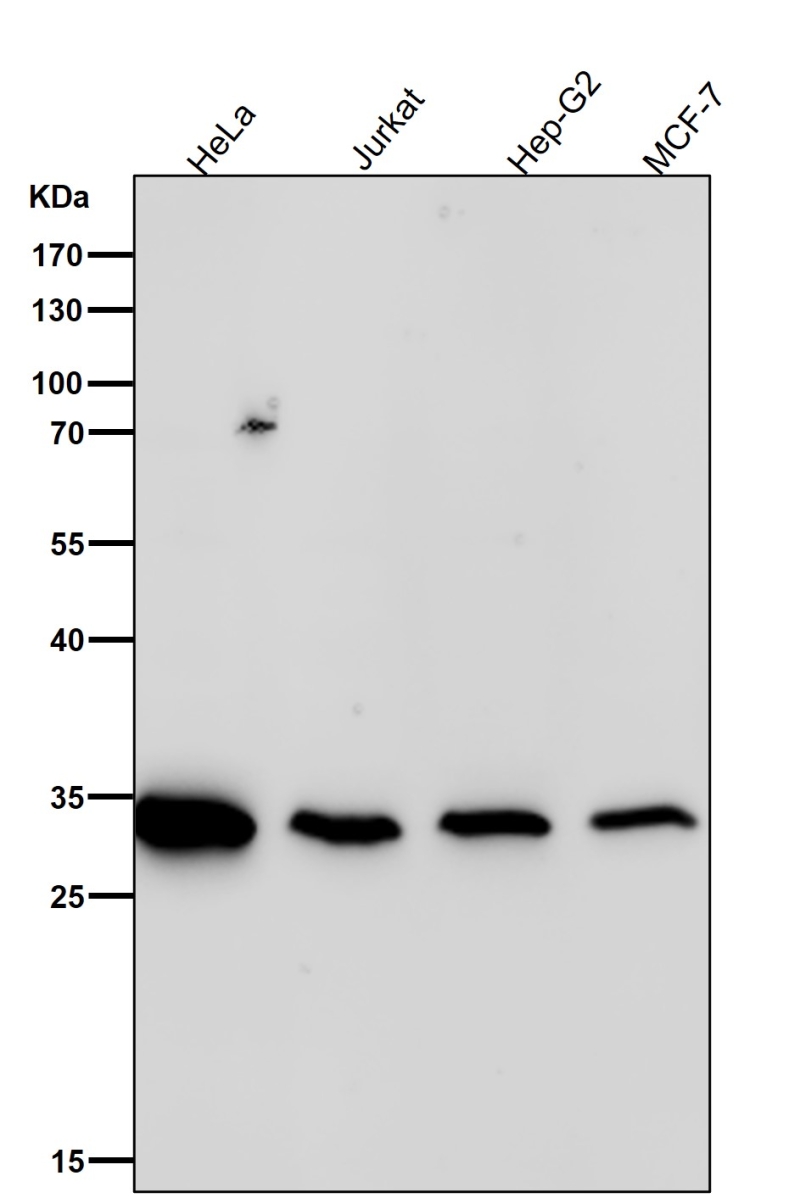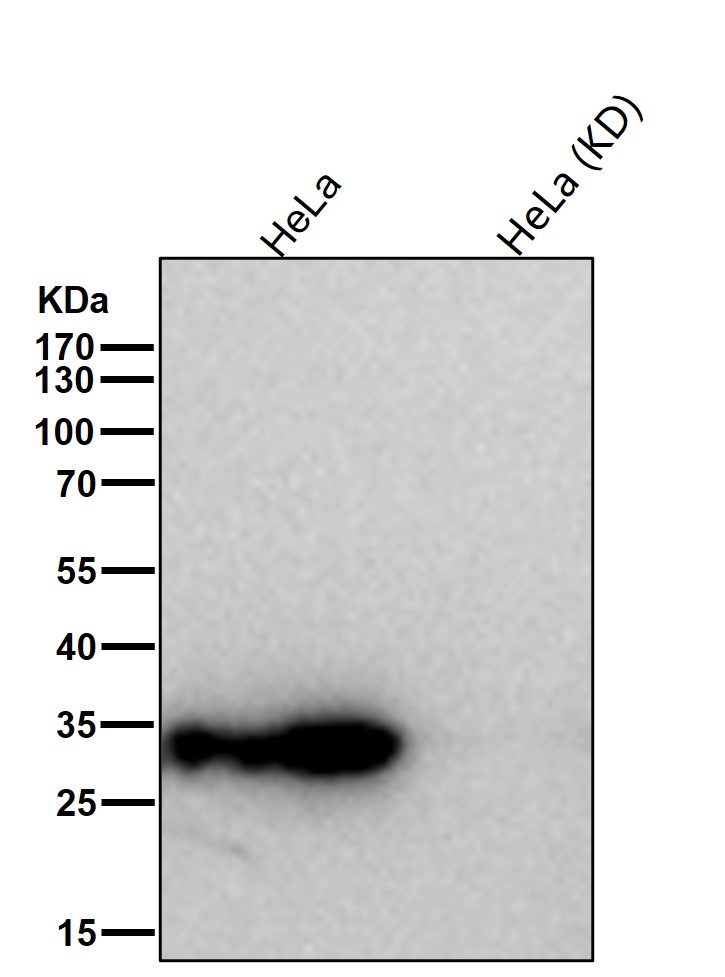


| WB | 1/1000-1/2000 | Human,Mouse,Rat |
| IF | 1/20-1/50 | Human,Mouse,Rat |
| IHC | IHC:1/100-1/200;IHF:1/50-1/200 | Human,Mouse,Rat |
| ICC | 1/50-1/200 | Human,Mouse,Rat |
| FCM | 1/20-1/100 | Human,Mouse,Rat |
| Elisa | 咨询技术 | Human,Mouse,Rat |
| Aliases | MDA9; SDCBP; ST1; SYCL; Syntenin 1; TACIP18;;Syntenin 1 |
| WB Predicted band size | 32 kDa |
| Host/Isotype | Rabbit IgG |
| Antibody Type | Primary antibody |
| Storage | Store at 4°C short term. Aliquot and store at -20°C long term. Avoid freeze/thaw cycles. |
| Species Reactivity | Human |
| Immunogen | A synthesized peptide derived from human Syntenin 1 |
| Formulation | Purified antibody in PBS with 0.05% sodium azide,0.05% BSA and 50% glycerol. |
+ +
以下是3-4篇关于Syntenin抗体的参考文献及其简要摘要:
---
1. **"Syntenin: A key player in cancer metastasis"**
- **作者**: Grootjans JJ, et al.
- **摘要**: 研究通过免疫印迹(Western blot)和免疫荧光技术,利用Syntenin抗体揭示了Syntenin在肿瘤细胞迁移和转移中的关键作用,发现其通过调控细胞粘附相关信号通路(如syndecan结合)促进侵袭性表型。
2. **"Syntenin-ALIX interaction in extracellular vesicle biogenesis"**
- **作者**: Baietti MF, et al.
- **摘要**: 通过免疫共沉淀(Co-IP)和抗体阻断实验,证明Syntenin与ALIX蛋白结合,在外泌体形成中发挥核心作用,并依赖其PDZ结构域介导的分子相互作用调控囊泡运输。
3. **"Syntenin knockdown inhibits viral budding via syndecan binding"**
- **作者**: Beekman JM, et al.
- **摘要**: 利用特异性Syntenin抗体进行功能研究,发现Syntenin通过结合syndecan调控HIV-1病毒颗粒的出芽过程,提示其在病原体-宿主相互作用中的潜在靶点价值。
4. **"Syntenin-1 promotes melanoma metastasis through integrin activation"**
- **作者**: Zhu G, et al.
- **摘要**: 研究通过免疫组化和Syntenin抗体验证,发现Syntenin-1在黑色素瘤中高表达,并通过激活整合素β1信号通路增强肿瘤细胞的侵袭能力,为靶向治疗提供依据。
---
以上研究均涉及Syntenin抗体的应用(如蛋白检测、定位或功能阻断),并聚焦于其在癌症、外泌体或病原体感染中的分子机制。
Syntenin (also known as SDCBP, syndecan-binding protein) is a multifunctional adaptor protein involved in cellular signaling, adhesion, and membrane trafficking. It contains two PDZ domains that mediate interactions with various binding partners, including syndecans (transmembrane heparan sulfate proteoglycans), ALIX (apoptosis-linked gene 2-interacting protein X), and growth factor receptors. Syntenin plays roles in diverse biological processes such as exosome biogenesis, receptor trafficking, synaptic formation, and cancer metastasis. For example, it facilitates exosomal cargo sorting by bridging syndecan heparan sulfate chains with the ESCRT machinery via ALIX, influencing tumor cell invasion and metastasis. In neurons, syntenin regulates synaptic architecture by interacting with proteins like prosaposin and glutamate receptors.
Syntenin antibodies are essential tools for studying its expression, localization, and molecular interactions. These antibodies are typically developed in hosts like rabbits or mice using immunogenic peptides or recombinant protein fragments. They are validated for applications such as Western blotting (WB), immunofluorescence (IF), and immunohistochemistry (IHC). Specific clones or polyclonal preparations may vary in recognizing distinct epitopes or post-translationally modified forms. Researchers use syntenin antibodies to investigate its roles in cancer progression (e.g., via exosome-mediated communication), neurological disorders (e.g., synaptic dysfunction), and viral entry mechanisms (e.g., HIV-1 attachment). Proper validation, including knockout controls and cross-reactivity checks, is critical due to its homology with other PDZ domain-containing proteins. Commercial antibodies often cite reactivity across human, mouse, and rat samples.
×